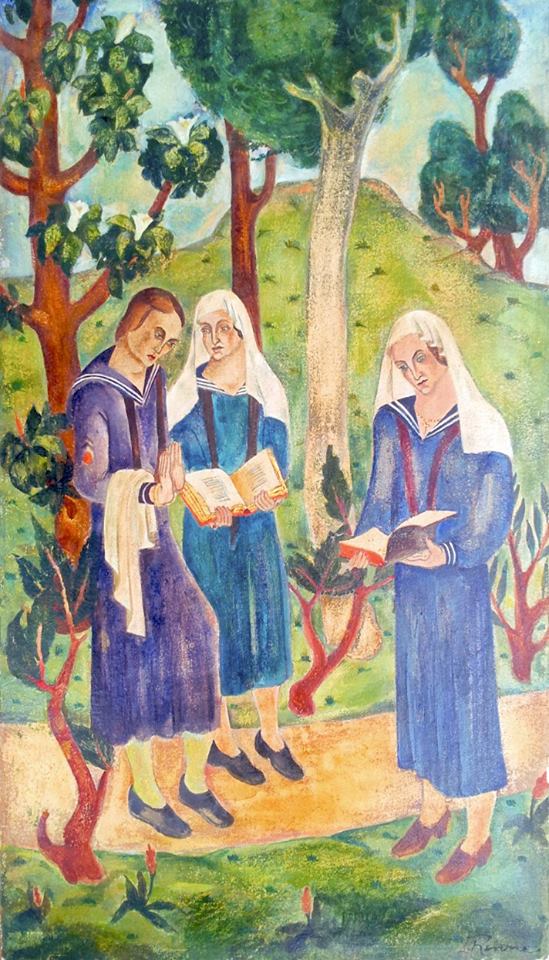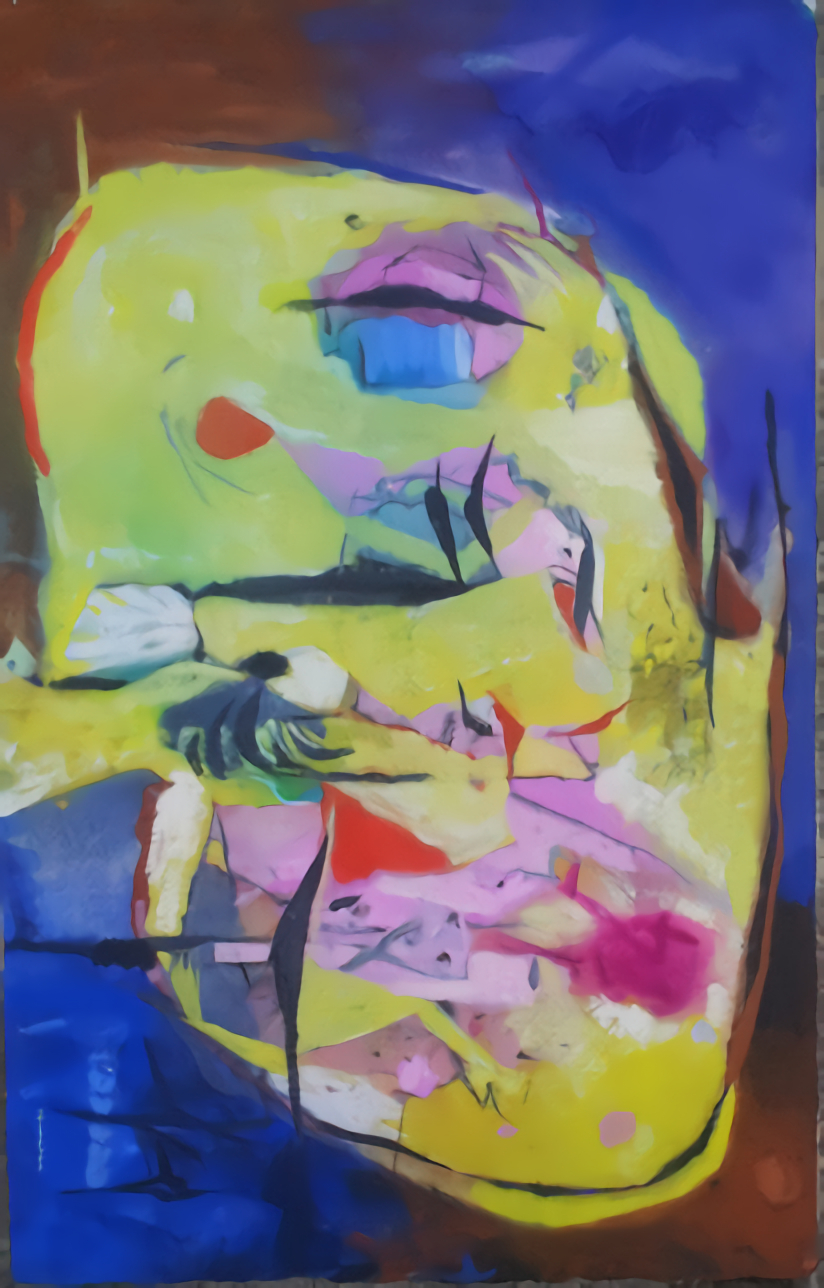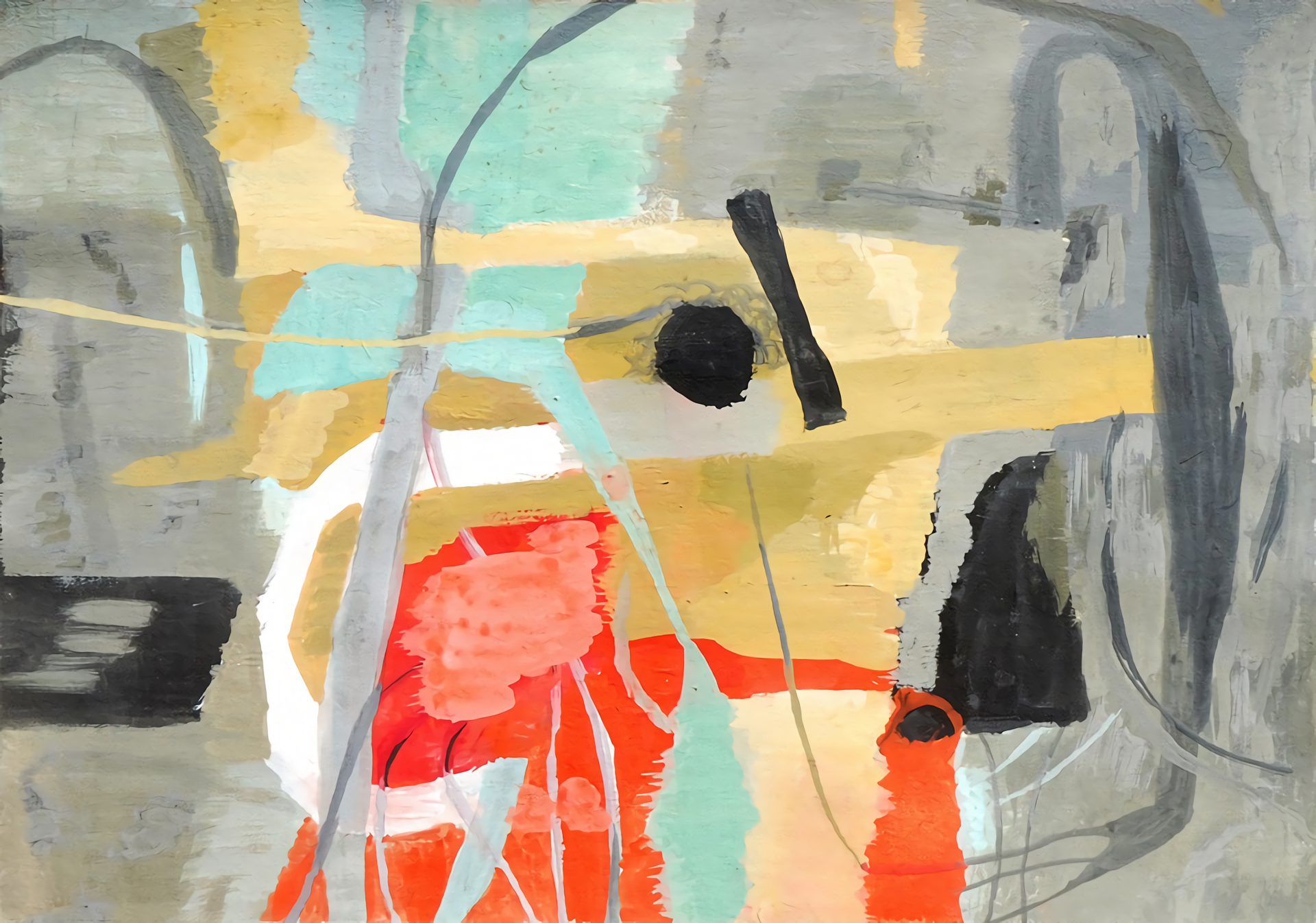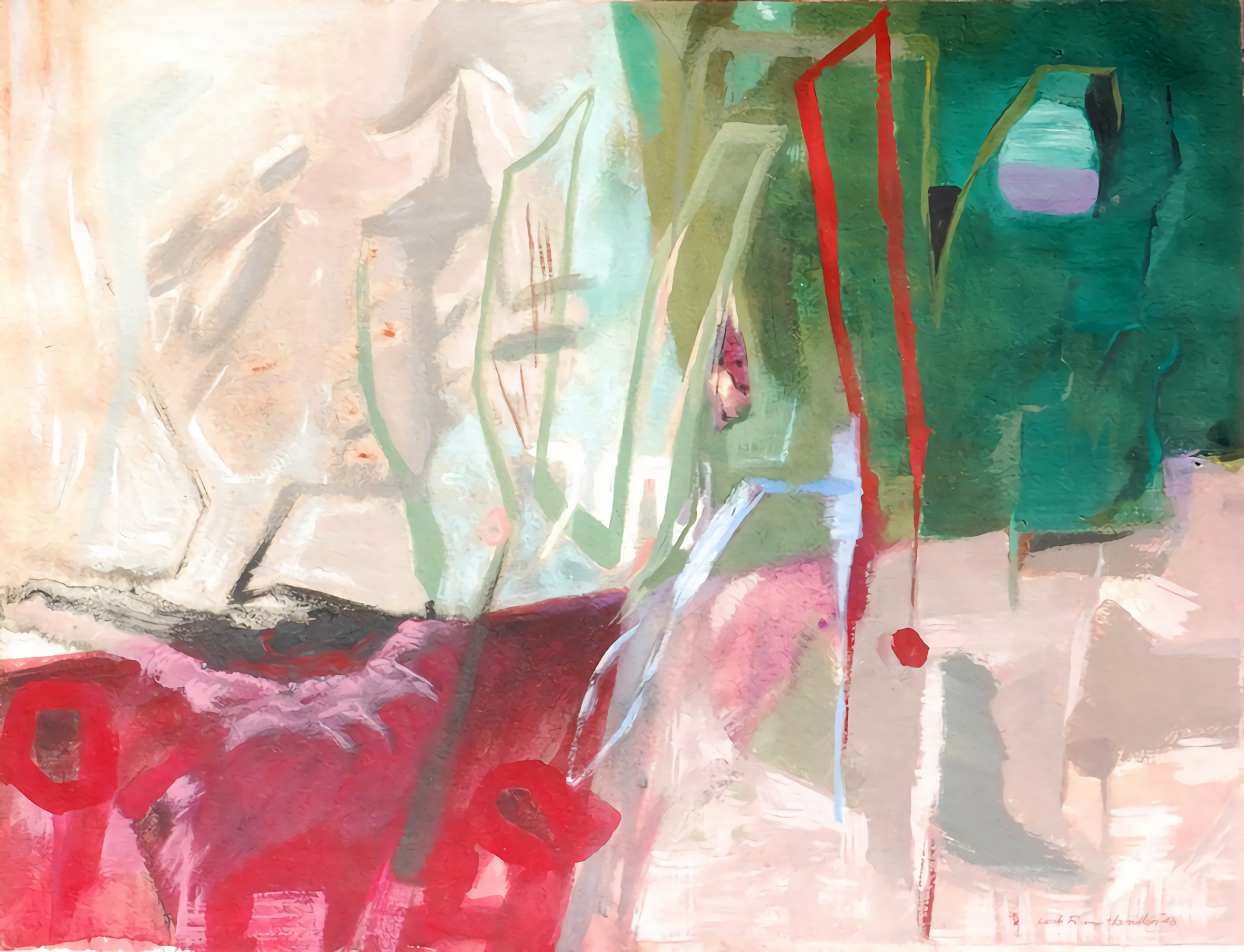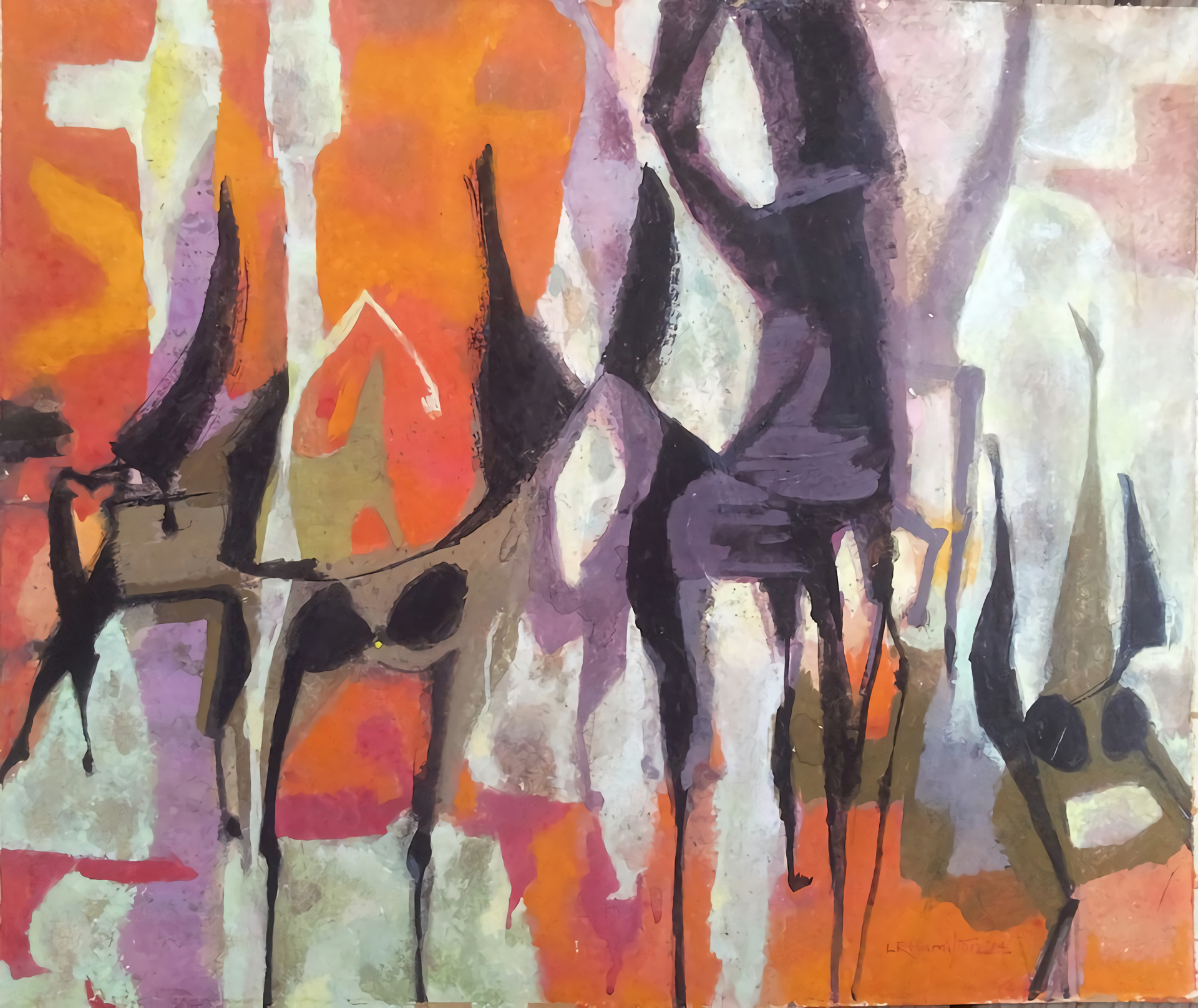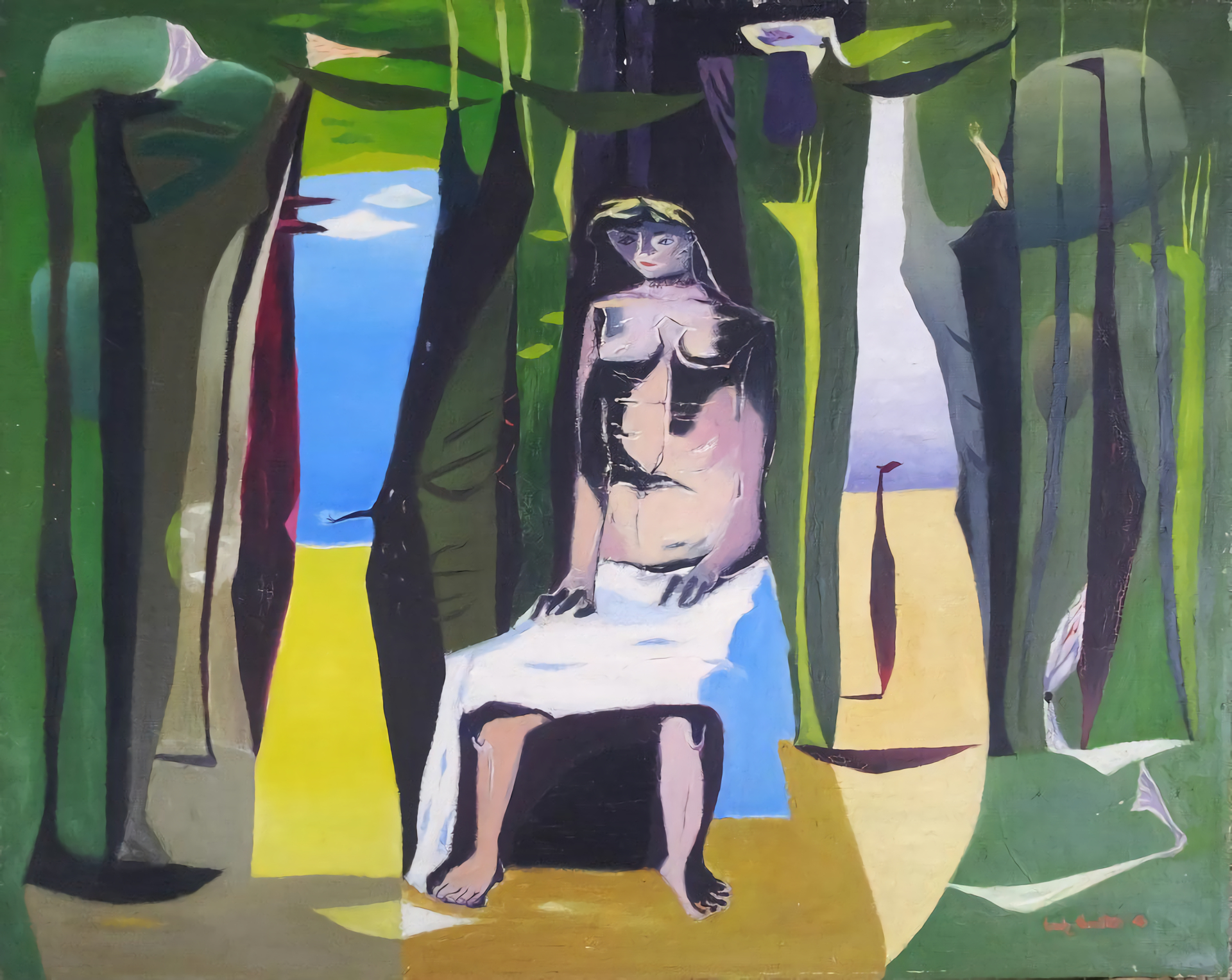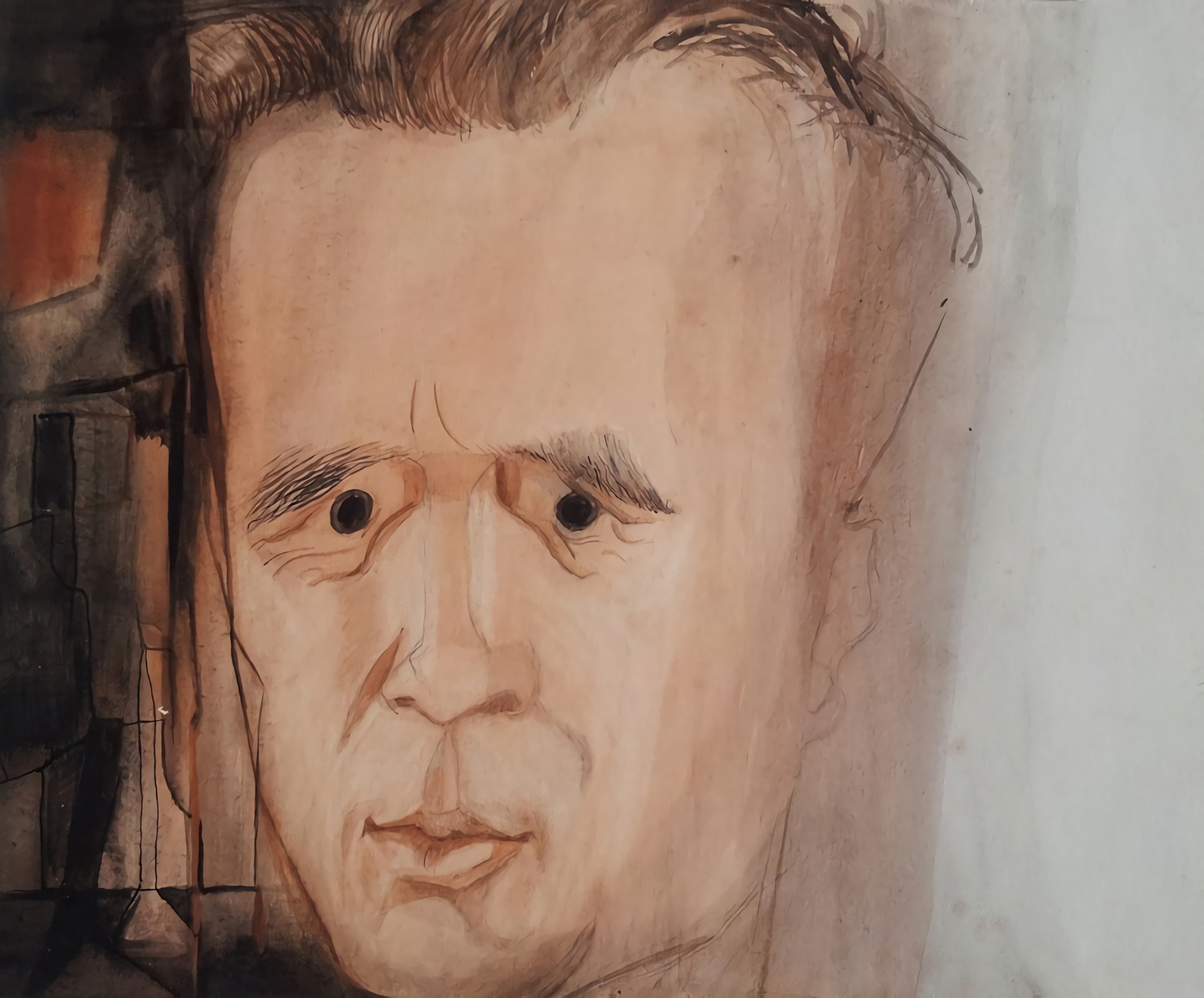Leah Rinne Hamilton
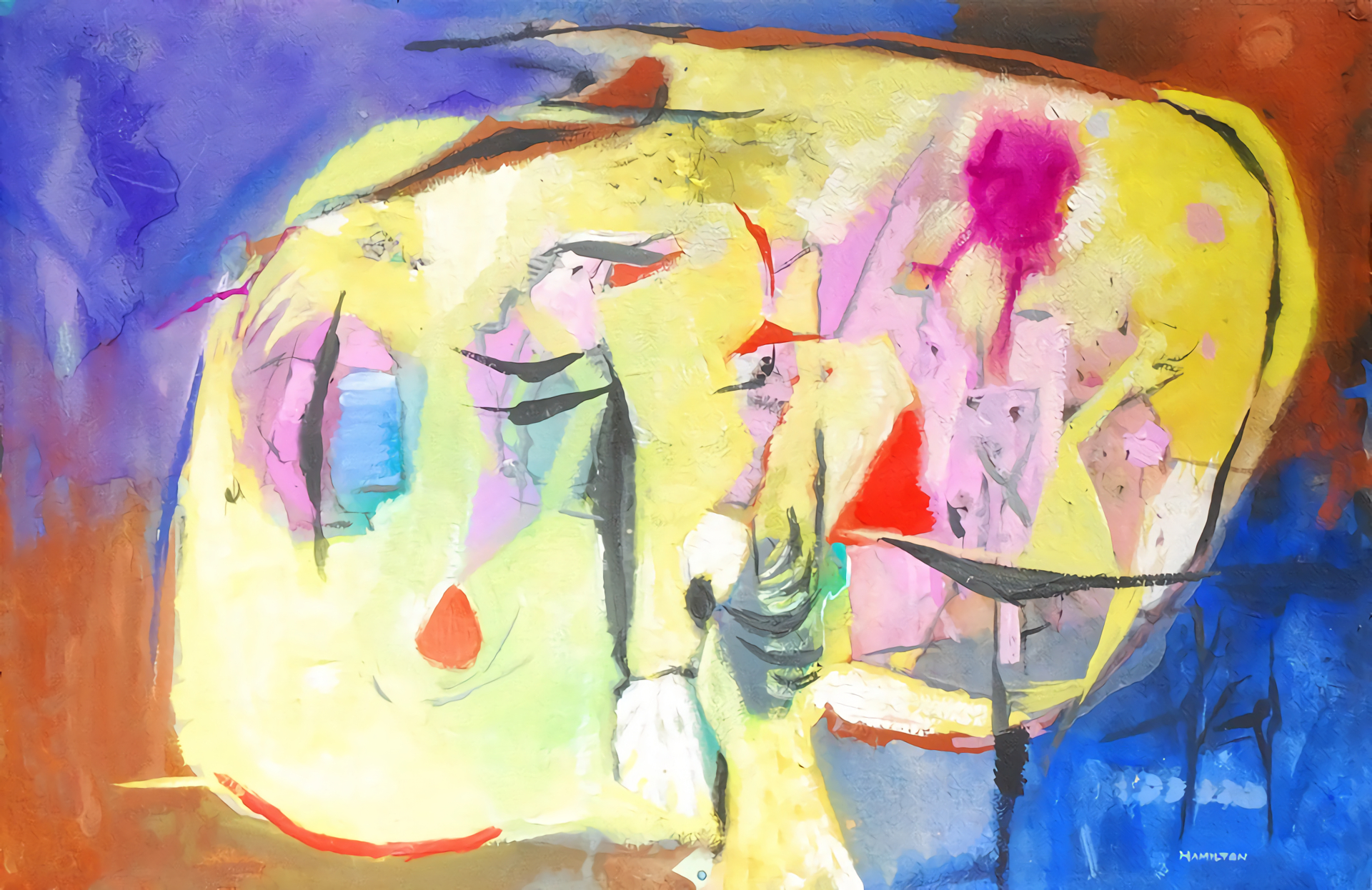
About Leah Rinne Hamilton
Born in Finland on October 15, 1906, Leah Rinne immigrated to the United States
with her family in 1921. Settling in the Bay Area, where many Finish immigrants
worked in California’s burgeoning railroad industry, she received a Masters Degree
in Fine Art from the University of California Berkeley. After returning from an
extended visit to Europe in 1930, she worked as an instructor in the art department
of Dominican College in San Rafael—a position she held for over a decade.
Hamilton’s artistic career has been scantly researched despite her evident prominence in northern California’s modernist art scene. Her career spanned three decades, during which she was active in a number of local art movements and experiments in painting, beginning with the Symbolist school that was brought to prominence by such artists as Matthew Barnes (1880-1951) and ending with a mid – century move from Surrealism to Abstract Expressionism. Hamilton regularly exhibited in galleries and museums throughout the state, namely the California Legion of Honor, Oakland Art Gallery, and the San Francisco Museum of Modern Art (from which she received several prizes).

The height of her career occurred in the 1940s, when she was featured in a number of survey exhibitions across the United States, including the 54 th Annual American Paintings and Sculpture exhibition at the Art Institute of Chicago in 1943, where she presented a Regionalist-inspired Bay Area scene in concert with the featured work of Edward Hopper, Marsden Hartely, and Horace Pippin.
The artist was married to atomic physician Joseph Gilbert Hamilton, a pioneer in the study of radioactive isotopes who worked on the Manhattan District project that led to the development of the Atomic Bomb. Dr. Hamilton died from leukemia at age 49 in 1957 in what experts termed an “industrial accident,” given his exposure to radioactive material during his groundbreaking research trials. Leah Rinne Hamilton’s later work reflects a pronounced sense of foreboding in expressionist watercolors that are executed in a sullied palette. Her “atomic age” landscapes in which figures and settings are darkened and become dramatically abstracted stand in great contrast to the genre-scene paintings that mark the first part of her diverse oeuvre. She died on July 4, 1960 in Alameda County.
–Maymanah Farhat
Hamilton’s artistic career has been scantly researched despite her evident prominence in northern California’s modernist art scene. Her career spanned three decades, during which she was active in a number of local art movements and experiments in painting, beginning with the Symbolist school that was brought to prominence by such artists as Matthew Barnes (1880-1951) and ending with a mid – century move from Surrealism to Abstract Expressionism. Hamilton regularly exhibited in galleries and museums throughout the state, namely the California Legion of Honor, Oakland Art Gallery, and the San Francisco Museum of Modern Art (from which she received several prizes).

The height of her career occurred in the 1940s, when she was featured in a number of survey exhibitions across the United States, including the 54 th Annual American Paintings and Sculpture exhibition at the Art Institute of Chicago in 1943, where she presented a Regionalist-inspired Bay Area scene in concert with the featured work of Edward Hopper, Marsden Hartely, and Horace Pippin.
The artist was married to atomic physician Joseph Gilbert Hamilton, a pioneer in the study of radioactive isotopes who worked on the Manhattan District project that led to the development of the Atomic Bomb. Dr. Hamilton died from leukemia at age 49 in 1957 in what experts termed an “industrial accident,” given his exposure to radioactive material during his groundbreaking research trials. Leah Rinne Hamilton’s later work reflects a pronounced sense of foreboding in expressionist watercolors that are executed in a sullied palette. Her “atomic age” landscapes in which figures and settings are darkened and become dramatically abstracted stand in great contrast to the genre-scene paintings that mark the first part of her diverse oeuvre. She died on July 4, 1960 in Alameda County.
–Maymanah Farhat

